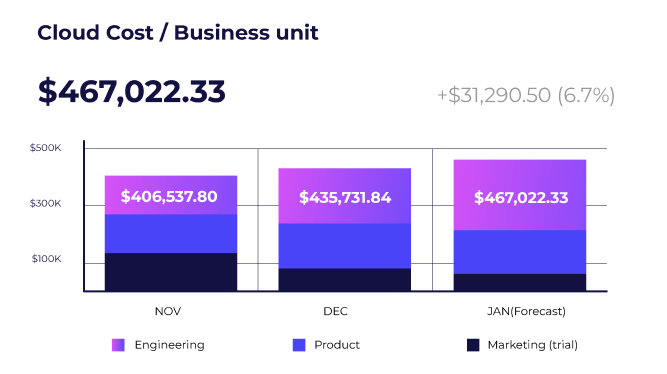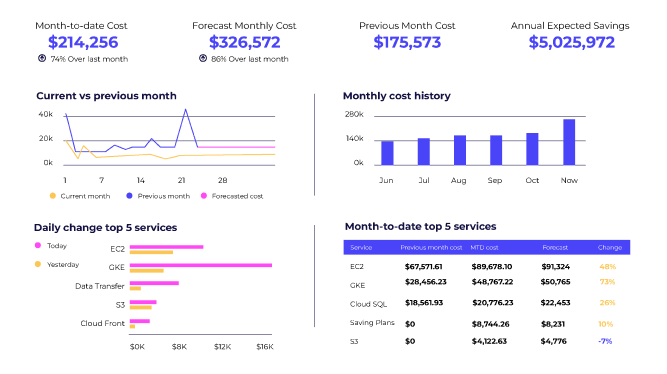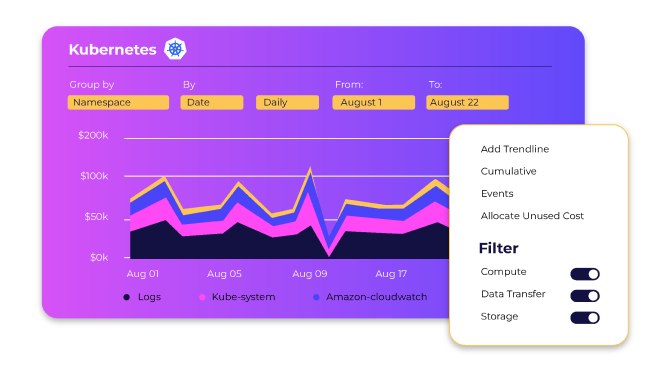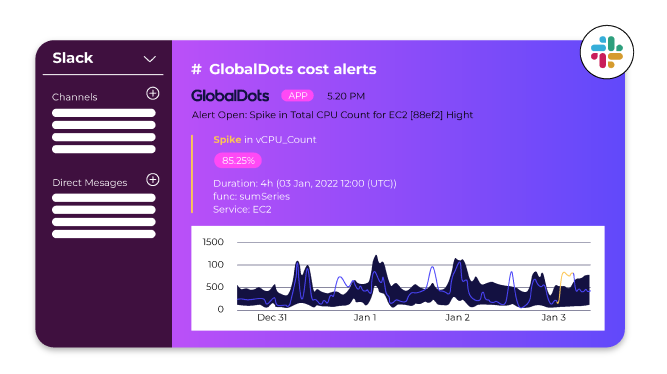Waste Management
Identify waste and savings opportunities across your clouds and remediate them instantly.
Get your cloud cost saving assessments today:

Utilize Innovation to Control Cloud Waste
Gain control over your cloud bills with our tested and proven waste management innovative solution. Easily adopt to optimize your resources, manage your multi-cloud and Kubernetes spend in real time, reduce your waste and correlate your spend with your business goals.

-
100% Autonomous -
100% Personalized -
100% Control on your cloud spent
How does it work?
Gain valuable insights into the unit economics of your SaaS customers, features, engineering teams, and more by monitoring your cloud metrics alongside revenue and business metrics. Our Waste Management FinOps solution empowers FinOps practitioners to continuously optimize their cloud investments, enabling them to strategically drive business initiatives.

Experience the seamless integration of your cloud spend with our Waste Management FinOps solution. Monitor and optimize your cloud costs and resource utilization across leading platforms like AWS, GCP, and Azure. Dive deep into your data to gain a comprehensive understanding of how your infrastructure and economies are evolving.

 Optimized Kubernetes Costs
Optimized Kubernetes Costs
Gain granular visibility into your Kubernetes costs and seamlessly integrate them with your non-containerized costs and business metrics. Get an accurate view of the expenses associated with running microservices, features, and more. Dive deep into performance analysis, identify under-utilization at the node level, and eliminate idle costs for maximum efficiency.

 From Detection to Action
From Detection to Action
Empower your engineers with the ability to eliminate unpredictable spending through continuous monitoring and deep visibility. Our solution automatically learns service usage patterns and alerts relevant teams to irregular cloud spend and usage anomalies. With comprehensive context provided, it ensures the fastest time to resolution for effective cost optimization.

FAQs
-
What is cloud waste?
Cloud waste refers to the inefficient allocation and utilization of cloud resources, resulting in unnecessary expenditure. It’s a concern for FinOps teams aiming to manage cloud costs effectively. Automated solutions play a pivotal role in identifying and mitigating such waste, enabling organizations to optimize costs while maintaining performance and scalability.
-
What is the main cause of cloud waste?
Efficient monitoring and governance frameworks are essential to identify and address these issues, ultimately facilitating cost optimization in cloud environments. Leveraging automated tools for cleanup further streamlines the process, ensuring that resources are right-sized and properly managed to minimize waste.
-
How much cloud is wasted?
Industry reports suggest that a significant portion of cloud spending—often estimated to be around 30% or more—can be attributed to inefficient resource allocation and underutilization. Implementing robust FinOps practices, alongside automated solutions for cost optimization, can help mitigate this waste and drive greater efficiency in cloud spending.
-
How to measure cloud waste?
Measuring cloud waste involves analyzing various metrics such as unused or underutilized resources, over-provisioned instances, and inefficient data storage practices. Key performance indicators (KPIs) like cloud spend vs. actual usage, resource utilization rates, and cost per workload can provide insights into areas of waste. Automated tools and FinOps methodologies play a crucial role in accurately measuring and monitoring cloud waste over time, enabling organizations to make informed decisions for cost optimization and resource efficiency.
-
How can we eliminate cloud waste?
Eliminating cloud waste involves several strategies, including right-sizing resources to match actual demand, implementing auto-scaling for dynamic workload adjustments, and optimizing storage solutions to minimize redundancy. Utilizing automated monitoring and governance tools can help identify and address waste in real-time, while FinOps practices ensure cost-aware decision-making throughout the organization. Continuous evaluation and adjustment based on performance metrics are essential for maintaining efficiency and reducing cloud waste over time.















